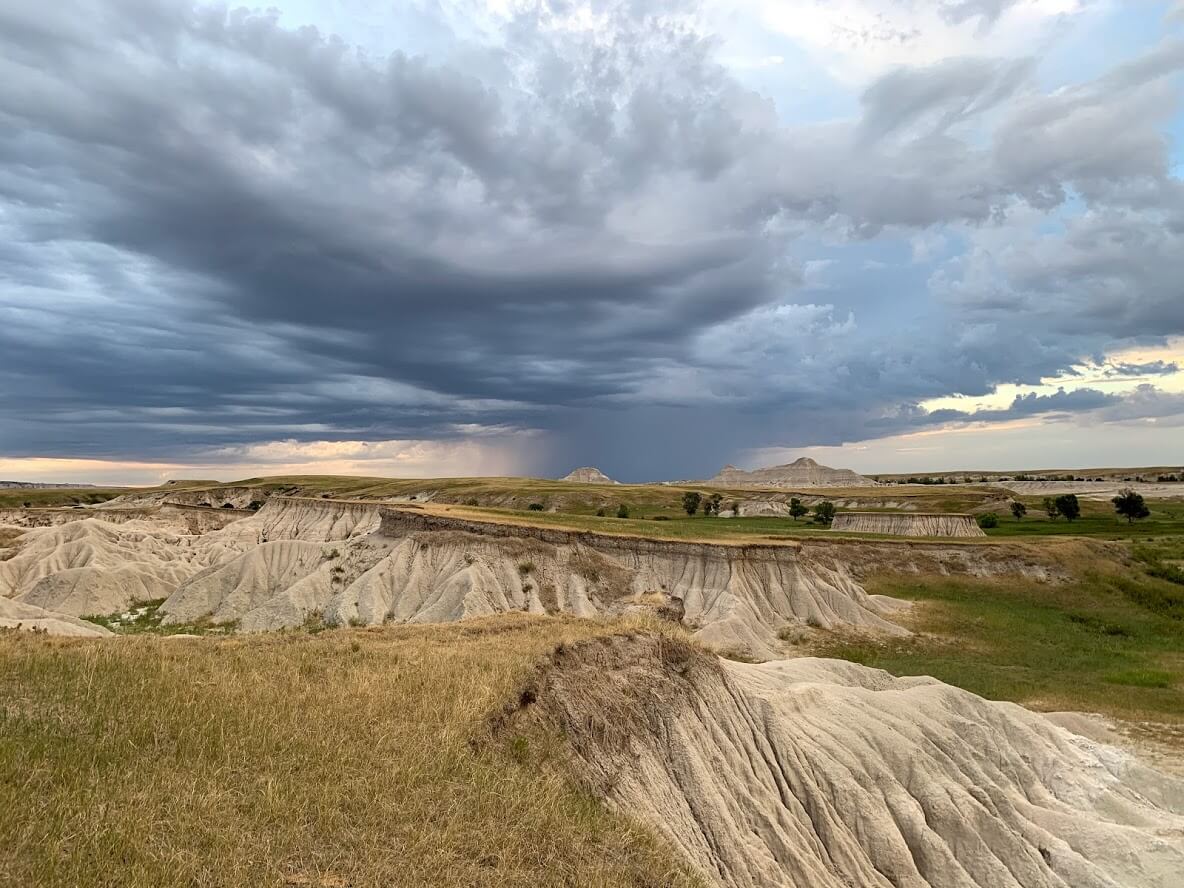After 35 Million Years, New Special Exhibition Brings the Nebraska Badlands to Bradenton’s Bishop Museum of Science and Nature
Opening Jan. 28, Badlands to Bradenton focuses on the fossil finds from summer paleontology digs and the benefits to Manatee County teachers and their students

Since 2011, The Bishop Museum of Science and Nature has partnered with the Toomey Foundation for the Natural Sciences to lead more than 50 Manatee County teachers on paleontology expeditions to the Nebraska Badlands, allowing them to gain hands-on experience they can bring back to their classrooms.
Starting Jan. 28, The Bishop will share these expeditions with guests through its newest special exhibition, Badlands to Bradenton: Lessons from the Field, which showcases some of the most fascinating fossil finds and tells the story of these summer paleontology digs and how they can support learning.
- Badlands to Bradenton: Lessons from the Field will be open through June 6 and visiting is included in the price of admission.
Badlands to Bradenton features fossils of:
- Brontotheres, a group of extinct mammals that may be related to today’s horses and rhinos.
- Poebrotherium, early camels that grazed North America’s grassland for about 32 million years. Although today we associate camels with Africa and Asia, they originated in North America.
- Oreodonts, a larger group of herbivores that ranged from rabbit-sized to sheep-sized. These are the fossils teachers find most often. Oreodont fossils have also been found in Florida: A larger species was discovered in Columbia County in 2003.
- Predators such as Hyaenadon and the false saber cat Hoplophoneus.

A fossil of a Brontothere, also known as a Titanothere, found on a dig. This group of extinct mammals may be related to today’s horses and rhinos.
“Thanks to the Museum’s partnership with the Toomey Foundation, we’re able to lead expeditions to the White River Formation in Nebraska where we can offer teachers the experience of being on a real dig — finding and excavating fossils — so they can share their knowledge with their students,” said Matthew D. Woodside, The Bishop’s Chief Curator and Director of Exhibitions. “This new special exhibition brings the wonder of those discoveries home to Bradenton.”
Badlands to Bradenton also includes interactive features for smartphones and tablets, including 3D models of fossils and paleoart commissioned especially for the exhibition.
Why Nebraska? Millions of years ago, Nebraska looked like today’s Everglades: Shallow rivers and mucky floodplains supported a variety of mammals. But as Nebraska dried up, many of the mammals became extinct and their remains captured in the rock, creating the fossil-rich Badlands we know today.
“Florida was once home to species similar to those that roamed in the Badlands, but Florida’s geology has developed differently over the past 30 million years, including a relatively recent period where much of the land mass that holds the fossil record was covered with water,” said Tish Sacks, The Bishop’s Director of Education. “Fortunately, the Badlands digs offer an opportunity for teachers to explore this period of natural history. We bring the teachers out of their comfort zone and inspire them to learn new skills in an environment they’ve never encountered before. That challenge to explore something new sparks discussion, energy and ideas for the classroom.”
- Badlands to Bradenton: Lessons from the Field is generously sponsored by the Toomey Family.
Bradenton entrepreneur Jim Toomey started fossil hunting when he was a boy growing up on Sanibel. He frequented the Apac mine in Sarasota — today better known as Benderson Park — where he discovered a walrus tusk segment that is now on display at the Florida Museum of Natural History. The former Museum board member worked closely with staff from The Bishop to develop the Badlands expeditions to help encourage a love of science in local students. Each year, teachers apply to take part in the expeditions. They provide their own transportation to Nebraska, but once they arrive, their expenses are covered by the expedition.
“I wanted to make these digs available to teachers because I felt they would have the greatest impact on helping kids learn about science today,” Toomey said. “It also teaches kids that no matter what background you are from, anyone can have the opportunity to make a discovery!”


After a fossil is uncovered, it must be jacketed so it can be removed from the ground without falling apart. In jacketing, a plaster covering is molded over and around a fossil to hold it together, then it is removed from the ground. Once back at the Museum, it can be uncovered. In the image on the left, teachers learn about jacketing a fossil. In the image on the right, the team jackets a fossil so it can be removed from the ground.
